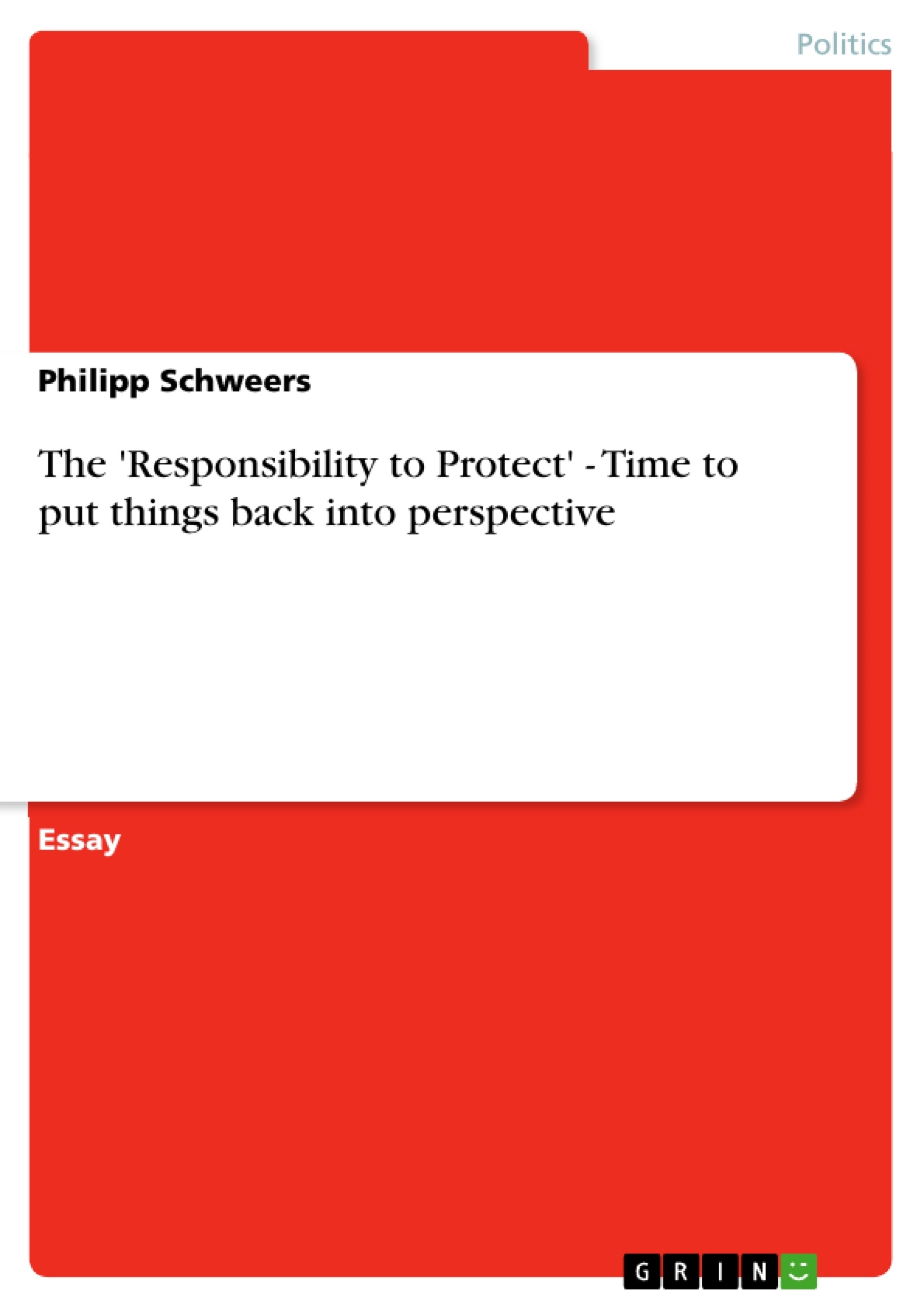At the turn of the 21st century, the world – meaning policymakers, scholars, and activists – seems to be divided between an increasingly influential group of normative activists which tries to eliminate the evil of the world by implementing global norms and another group which abuses the current debate concerning norms and the global meaning of human rights as a cover for good old power politics and their own strategic concerns. Especially the latest achievement in the normative debate, the ‘Responsibility to Protect’-concept, is dubious and opens the door for abuse by ‘false friends’. After an impressing and fast-paving development/increase in meaning since its first introduction in 2001, this concept is widely seen as legitimate framework for current and future humanitarian engagement and as a replacement for the former method of humanitarian intervention. But, despite the good intentions behind that concept, many critical voices underscore conceptual weaknesses or even inherent conceptual dangers of R2P. Currently, as José E. Alvarez points out, R2P is at the turning point from political rhetoric to legal norm. This paper aims on the examination of the value of R2P as recent object of normative debate and argues for more political realism among normative actors.
Inhaltsverzeichnis (Table of Contents)
- Normative developments towards R2P
- Conceptual Basics and Theoretical Roots of the 'Responsibility to Protect' (R2P) Concept
- Conceptual Weaknesses and Shortcomings of R2P
- Is R2P Still Useful?
Zielsetzung und Themenschwerpunkte (Objectives and Key Themes)
This paper examines the value of the 'Responsibility to Protect' (R2P) concept in the context of contemporary normative debates. It analyzes the emergence and evolution of the R2P concept, its conceptual strengths and weaknesses, and its practical utility in the realm of international politics. The paper advocates for greater political realism among normative actors in the face of R2P's limitations.
- The development of the 'Responsibility to Protect' (R2P) concept as a new norm in international relations.
- The conceptual strengths and weaknesses of R2P, including its potential for misuse and abuse.
- The practical utility of R2P in the context of contemporary political realities.
- The importance of political realism in navigating the challenges and opportunities presented by R2P.
- The evolving relationship between normative agendas and political realities in the post-Cold War era.
Zusammenfassung der Kapitel (Chapter Summaries)
This section will focus on the main themes, arguments, or narrative elements of each chapter, excluding summaries of the conclusion or any sections containing major revelations or spoilers.
- Normative developments towards R2P: This chapter examines the historical context of the R2P concept, focusing on the shift in international relations following the end of the Cold War. It explores the emergence of new norms and concepts such as 'human security' and the rise of humanitarian interventions. It analyzes the motivations behind these developments and explores their implications for the international community.
- Conceptual Basics and Theoretical Roots of the 'Responsibility to Protect' (R2P) Concept: This chapter delves into the conceptual framework of R2P, examining its origins, key principles, and theoretical underpinnings. It analyzes the relationship between R2P and other existing norms, such as the principles of state sovereignty and non-intervention. It also explores the different interpretations and understandings of R2P within the international community.
- Conceptual Weaknesses and Shortcomings of R2P: This chapter focuses on the critical analysis of R2P, highlighting its conceptual weaknesses and potential for abuse. It examines the challenges of defining and implementing R2P in a way that is both effective and morally sound. It also explores the potential for R2P to be misused by states for their own strategic interests.
- Is R2P Still Useful?: This chapter explores the practical utility of R2P in the context of contemporary international politics. It analyzes the successes and failures of R2P in various real-world situations, considering the challenges and opportunities that it presents. It also explores the implications of R2P for the future of international relations and the role of the international community in addressing humanitarian crises.
Schlüsselwörter (Keywords)
The primary keywords and focus topics of this work include the 'Responsibility to Protect' (R2P), humanitarian intervention, human security, state sovereignty, non-intervention, political realism, normative agendas, and the post-Cold War era. The paper examines the concept of R2P in relation to these key themes, exploring its theoretical foundations, practical limitations, and potential for both good and ill in the context of contemporary international relations.
- Citar trabajo
- Philipp Schweers (Autor), 2009, The 'Responsibility to Protect' - Time to put things back into perspective, Múnich, GRIN Verlag, https://www.grin.com/document/129278



